This post may contain affiliate links, which means I’ll receive a commission if you purchase through my links, at no extra cost to you. Please read full disclosure here.
In Korean, the object marking particle is usually 을 (eul) or 를 (reul), depending on the ending of the last syllable of the noun. 을 (eul) is used after a noun ending in a consonant. 를 (reul) is used after a noun ending in a vowel.
When the object and verb are close, you can either add the object marking particle or leave it out. It doesn’t make a big difference. For example, both “책을 읽었어요” and “책 읽었어요” are correct and mean “I read a book.”
Here are more examples where both the sentence with the object marking particle and the sentence without it are correct:
- 영화를 봐요 (yeonghwareul bwayo) = I watch a movie.
- 영화 봐요 (yeonghwa bwayo) = I watch a movie.
- 음악을 들어요 (eumageul deuleoyo) = I listen to music.
- 음악 들어요 (eumak deuleoyo) = I listen to music.
- 밥을 먹어요 (bapeul meogeoyo) = I eat rice/food.
- 밥 먹어요 (bap meogeoyo) = I eat rice/food.
- 커피를 마셔요 (keopireul masyeoyo) = I drink coffee.
- 커피 마셔요 (keopi masyeoyo) = I drink coffee.









